- By Javeria
- January 10, 2024

Affiliate marketing has gained significant momentum for a compelling reason – it’s a win-win strategy for both publishers and advertisers. Businesses of all sizes, as well as individuals, have come to realize that an affiliate marketing blog is an effective way to increase brand awareness, drive sales, monetize content, and earn a living while promoting products they believe in. That’s also the reason it is one of the best ways for bloggers to monetize their content through affiliate marketing. Blogging and affiliate marketing go hand in hand, making it one of the best ways for bloggers to earn money online.
No matter if you’re a travel blogger or a niche blogger, affiliate marketing can be a lucrative option to work from home and generate income. We’ll walk you through the step-by-step process of starting an affiliate marketing blog, without the need for coding skills or significant upfront costs. Discover how to write a blog for affiliate marketing and promote it with free traffic, without spending a dime on ads. Let’s unlock the secrets to successful affiliate marketing for bloggers together.
So, how much money can you potentially make with affiliate marketing?
Super-affiliates are known to rake in hundreds of thousands of dollars per year, showcasing the immense earning potential of affiliate marketing. For instance,
What is the earning potential for newer affiliates in the industry?
For those who are newer to the industry, there is promising earning potential. According to a poll conducted by Affise, income levels vary widely, but more than 25% of affiliates make between $81,000 and $200,000 per year. Affiliate marketing can offer significant financial rewards, making it an appealing venture for those looking to monetize their efforts and achieve financial success.
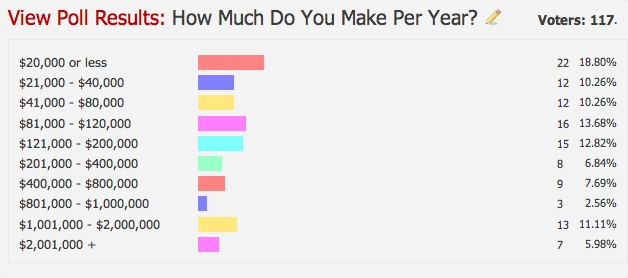
Here I told you how to choose the best niche for affiliate marketing. Before you start blogging for affiliate marketing, you will need to determine your blog niche. If you can’t decide which niche you want to pursue in your affiliate marketing blog. Here are several criteria you can use as consideration to choose your blog niche.
Before diving into the best affiliate programs, let’s walk through some simple methods to determine the niche for affiliate marketing blogs.
How to determine the niche for affiliate marketing blogs?
Based on the above criteria, you will determine the niche for your blog. There are two most popular methods to determine your blog niche.
The first method, you can find niche ideas from Click bank. It’s one of the biggest online retailers that sell digital and physical products. Since Click Bank has a wide range variety of niches, you can find the ideas in their affiliate marketplace section.

In the second method, you can find niche ideas from Udemy. It’s one of the largest online course and education platforms. You can find the most popular niche in the main category and the sub-category as your blog’s niche idea.
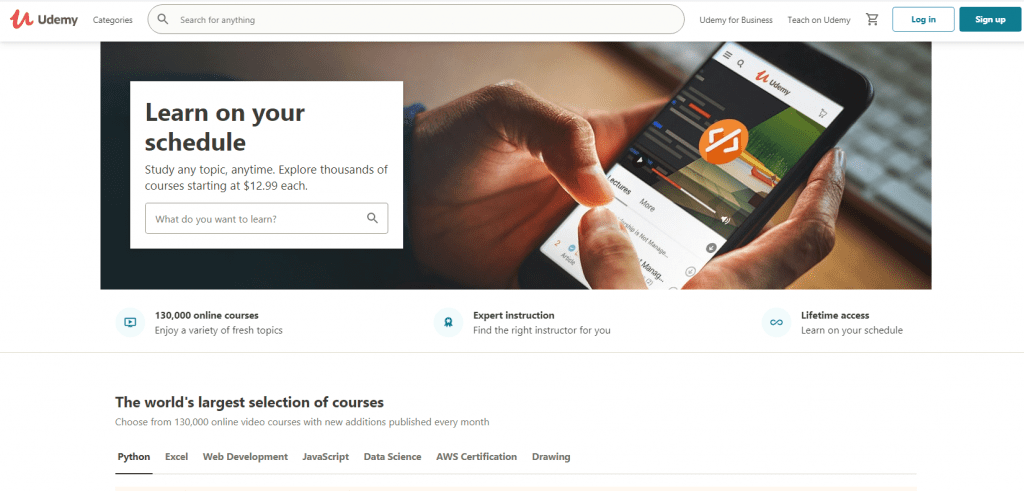
Now after determining your affiliate marketing blog niche, Let’s take a look at some of the best affiliate programs you can join.
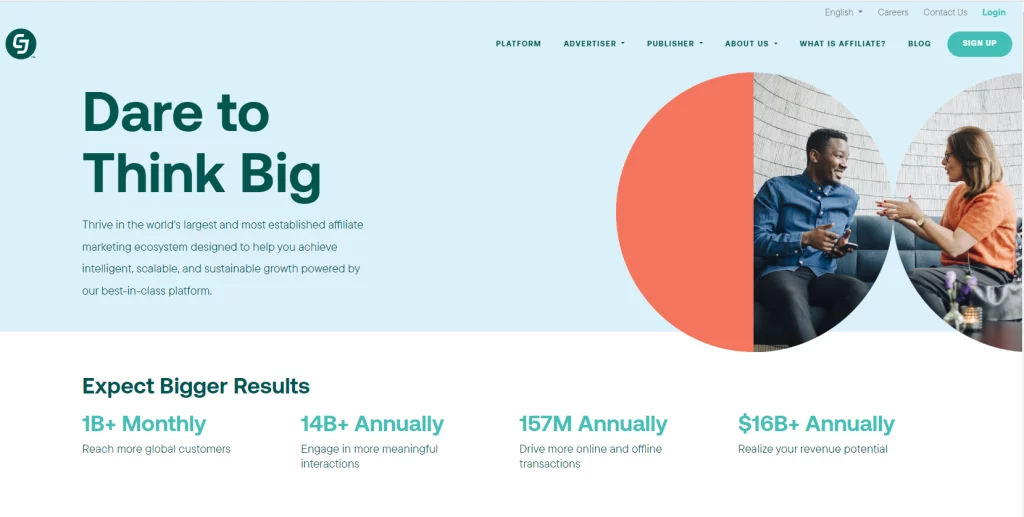
CJ Affiliate is a popular affiliate marketing program that boasts a large network of advertisers and publishers, including heavy hitters like Zappos, Verizon, and Travelocity. The interface is user-friendly, with easy navigation and advertiser filters to identify profitable programs quickly. CJ Affiliate also provides tools such as tracking and reporting, payment options, and customer support to help affiliates succeed. Many affiliates have found success with CJ Affiliate due to its reputation, reliability, and diverse range of advertisers and products available. Additionally, CJ Affiliate offers a widget creator that allows for the easy embedding of products into content through slideshows, grids, or collages.

ShareASale is a top-rated affiliate marketing program with over 4000 merchants and lucrative earning potential, with some merchants paying up to $300 per sale. The platform’s search parameters, such as EPC Greater Than and Commission Rate Greater Than, make it easy to find profitable programs. Additionally, ShareASale offers a Two-tier Program filter that allows affiliates to earn commissions from sub-affiliate referrals, further enhancing their earning potential.
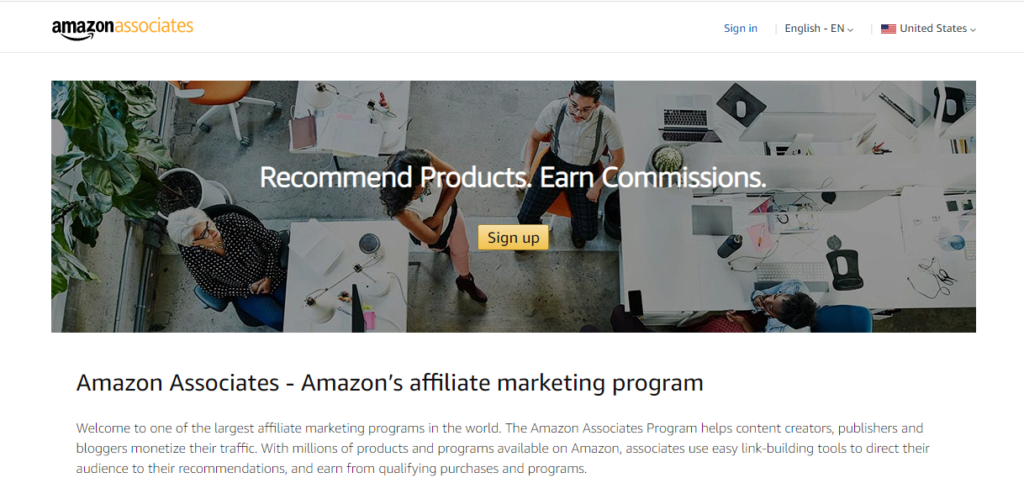
The Amazon Associates program is considered one of the best affiliate marketing platforms due to its wide product range, brand reputation, competitive commissions, reliable tracking and reporting, and high conversion potential. With Amazon’s diverse selection of products, affiliates can promote anything from a needle to a truck, and earn up to 10% commission on qualifying product sales. Amazon’s reputation as a one-stop shop for many people also leads to larger orders and higher earning potential for affiliates.

Max Bounty is new, innovative, and also building its prestige in upcoming best affiliate marketing websites. It has already worked with some high-end brands such as Norton, McAfee, and T-Mobile. They’re proud of what other affiliate networks don’t do yet, and it’s working better for them. Most affiliate programs fix monthly payments, so it’s best to check out a new and upcoming affiliate website. They have digital payment options.
Click here to learn more about Affiliate Programs
What is Target Audience?
“Target audience” refers to a particular demographic or group of people that a product, service, or message is meant to appeal to. To accomplish its marketing or promotion objectives, a company or organization must engage, communicate with, and ultimately influence a particular segment of the general population.
Why is it so important to determine Target audience?
In order for organizations to effectively reach and connect with a particular group of people, defining a target audience is a crucial step in the marketing and communication process. Age, gender, location, interests, preferences, behavior, and other pertinent demographic and psychographic traits are frequently used to identify the target audience. Businesses can increase the likelihood of obtaining favorable responses and results by developing marketing messages, offers, and promotions that are pertinent, enticing, and meaningful to the target audience.
How to determine your target audience?
Well, you have the basic understanding of target audience and decided on your affiliate marketing blog niche and validated it. The next step will be how to determine your target audience.
When you start blogging for affiliate marketing, you will do qualitative research to determine your readers and what kind of information will be valuable for them. The easiest way you can do by spying on the brand product or services on social media you want to promote as an affiliate. You will get a better picture of your blog reader by spying on the followers, likes, and comment from the social media brand page. So, you can tailor your blog content to make it fit your reader’s needs. Let’s see them in detail:
Market Research: Conducting in-depth market research to gather information and insights about various demographic groups. Analyzing demographic data such as age, gender, income, location, interests, preferences, behavior, and other pertinent factors may fall under this category.
Continuous evaluation and adaptation: Market dynamics are subject to change over time, so it’s critical to regularly assess and modify the target audience segments as necessary to remain applicable and successful in attracting and retaining the target audiences.
Customer Profiling: utilizing the information gathered during market research to create detailed profiles of various customer segments. To do this, one must gain a thorough understanding of the traits, requirements, motives, and behaviors of each target audience segment.
Segmentation analysis: examining the customer profiles to find trends, patterns, and distinctions between the various segments. This aids in identifying distinct populations with comparable traits and behaviors, which can serve as the foundation for defining target populations.
Prioritization: assessing each target audience segment’s potential size, growth potential, and profitability in order to rank them according to their strategic importance and alignment with business goals.
Testing and refinement: putting into practice marketing strategies and techniques geared toward each identified audience segment while keeping an eye on their reaction. Refining and modifying the target audience segments as necessary based on performance.
Regarding the blogging platform, you can use it to start an affiliate blog. I would like to recommend you use a self-hosted site for long-term business. I myself use Bluehost to set up my blog since it’s really cheap for beginners who just start blogging for affiliate marketing.
I highly recommend you start a blog for affiliate marketing using Bluehost as your self-hosted site. You can start blogging for affiliate marketing very cheap, like 3.95 per month with a 1-year domain FREE. So, you don’t have to buy any extra cost domain. It’s easy to set up, and customer support will be available 24/7 to solve your issue.
Having self-hosted sites can bring you several benefits like there is no risk your content will be removed since you own your site. Many top bloggers achieved their great income results by using the self-hosted site.
Click here to learn how to get paid to promote.
After you have chosen your blog hosting Bluehost which I highly recommend it. I will guide you step by step on setting it up to your blog with Bluehost, don’t worry. It’s super easy, simple, and fast.
Go to the Bluehost home page and click “Get Started.”

Then, you will need to choose your hosting plan. I highly recommend you choose a basic plan.
You will need to put a domain name for your blog and find a simple domain name that easily spells and remembers for your reader.
In the next step, you will need to fill up your account information and choose the package. In order to get the lowest price benefit, you can take a 3-year package, which offers you $3.95/ month.
You don’t need to get any extra package at the beginning. Once your blogging starts making your first sale, you can consider taking the domain protection and site lock security package. Lastly, inputting your payment information and click “Submit.” You’re done!
After you have finished setting up your site, you will need to create your first blog post to promote an affiliate product. There are many types of blog post content you can write to promote an affiliate blog.
You can write a tutorial post about the product you want to promote. Usually, it’s applied to software products that need step-by-step guidance. Product review posts are also popular since most people tend to research the product on the internet before buying it. Hence, providing a genuine review from your side about the product can be engaging and help you drive more traffic to your blog. That’s how your first blog post would look like after creating a website.
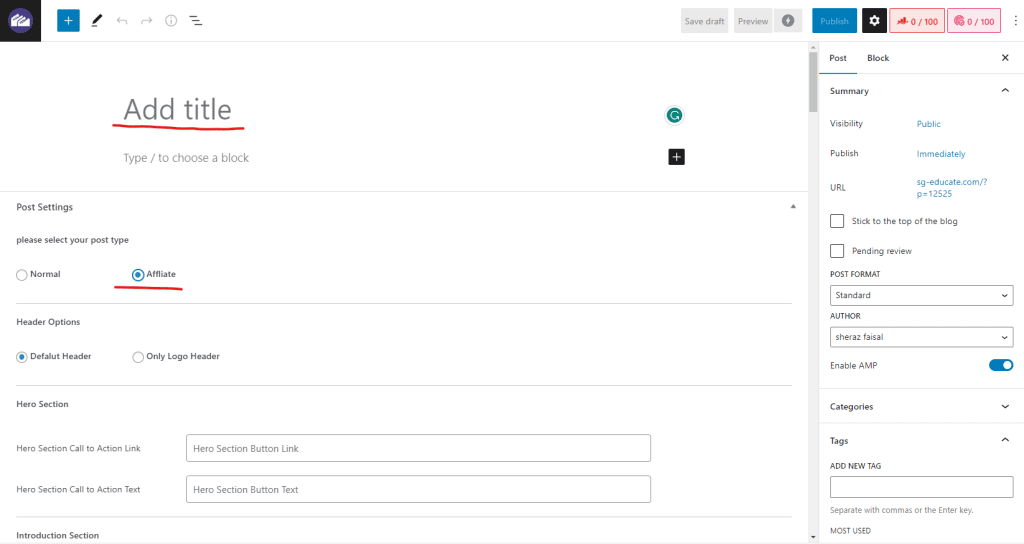
Besides, you can also write any blog post topic and promote the affiliate product indirectly in the middle of your blog post. This is just like your recommendation to solve any issue you have faced previously by referring your blog reader to use the product or services.
Learn the ropes of affiliate marketing without needing a website! Click here for an alternative approach if you’re not interested in creating a website for your affiliate business. Discover how you can participate in affiliate marketing without the hassle of website creation!
Click Here to learn about traffic sources for affiliate links.
Once you learn how to write an affiliate blog post, you will need to apply the affiliate program to add your affiliate link to your blog post. You can promote affiliate products from affiliate networks like Clickbank, CJ Affiliate, JVZoo, Digitstore24, or Warrior Plus.

Some affiliate networks like ShareASale, Impact Radius, and Awin requires you to have a website. The acceptance rate can be higher if you apply by using a custom email domain like yourname@yourblogname.com. If you use Bluehost, they will give you a free custom email domain you can use.
You can also apply for a stand-alone independent affiliate program like a digital or physical product. Or even applying for Amazon and Etsy affiliate programs.
If you have followed all the steps above, you have successfully set up your first affiliate blog post. The next thing you need to do is writing more blog posts to promote the affiliate product. You feel burnout if you’re a completely new beginner in the blogging world. But, this is what sets apart between those who make it and don’t.
If you feel overwhelmed, you can take a break for a while and come back again. It’s about consistency. You don’t need to become a good writer to create a successful affiliate blog. The key here is patience, persistence, and keep learning.
Good Luck! Thanks For Reading
Also Read : 5 Effective Ways: How To Make Money Online Easily
Also Read: Get Paid to promote with Affiliate Marketing